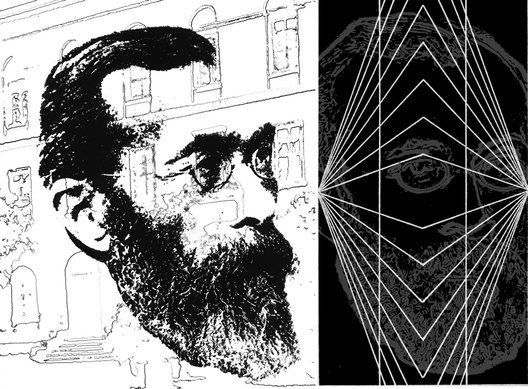Wilhelm Maximilian Wundt1832–1920
Wundt founded the first institute of experimental psychology at Leipzig in 1879. This event is often taken as marking the onset of psychology as an independent discipline. Wundt called his experimental approach to the study of conscious experience ‘physiological psychology’, and his text bearing that title, first published in 1874, was widely adopted as expressing the new psychology. Like Bain, he sought to unite physiology and psychology: “The present work shows by its very title that it is an attempt to bring two sciences which have for a long time followed very different paths although they are concerned with almost one and the same subject matter, that is, human life”. Wundt was born near Mannheim and received a medical education at Heidelberg. He later returned to Heidelberg to become an assistant in physiology to Helmholtz, and there published his first book Contributions to a Theory of Sense Perception (1862) which provided an outline of the course he considered the new psychology should follow. In 1875 he moved to Leipzig, where both Weber and Fechner were still active; on his arrival Wundt had some difficulty in persuading the authorities that he required space for his apparatus and for conducting experiments, but his arguments prevailed. The institute had limited facilities for formal laboratory experiments on psychophysics and reaction time, but it did attract enthusiastic students, and in 1881 a new journal, Philosophische Studien, was founded in which the results could be published. On the left, his portrait is presented within an outline of the building that housed the original Institut für experimentelle Psychologie (which was previously the university prison) in 1879. It was increased in size four years later, and the university built a new institute in 1896 to Wundt’s design. Wundt wrote voluminously on many branches of psychology; Boring estimated that throughout his academic life his published output was, on average, 700 words a day. His views changed during the many revisions of his books, and so the later editions often contrasted with earlier ones. He distinguished between the mediated experience available to the physical sciences and the immediate experience investigated by psychology. His use of introspection to study the latter resulted in the proposal that sensations and feelings were the elements of consciousness. Sensations could be combined to yield perceptions, but for these to influence behaviour they required attention: the voluntary control of attention to focus on aspects of perception was termed apperception. It was the active role played by attention that could rearrange perceptions to form a creative synthesis. Feelings were described in terms of three oppositional features: pleasantness-unpleasantness, strain-relaxation, and excitement-calm. Wundt was an empiricist and an associationist interested in the universal aspects of conscious experience; the application of psychology to real-world issues held little appeal for him. He lived through the period in which geometrical-optical illusions (as they were designated by Johann Oppel (1815-1894) in 1856) attracted the interests of many visual scientists. Wundt added to their number in 1888 with the figure shown on the right, in which the vertical lines appear curved inwards as a consequence of intersecting the radiating lines; his features are embedded in the illusion which now bears his name.
